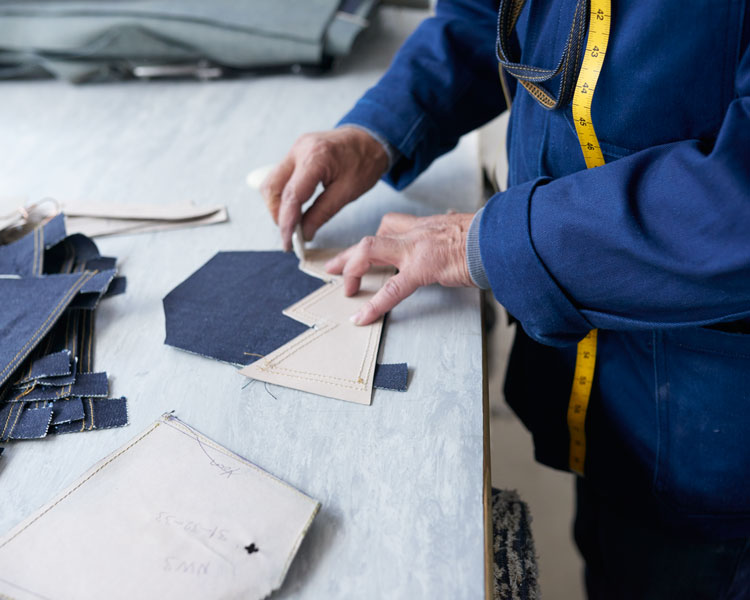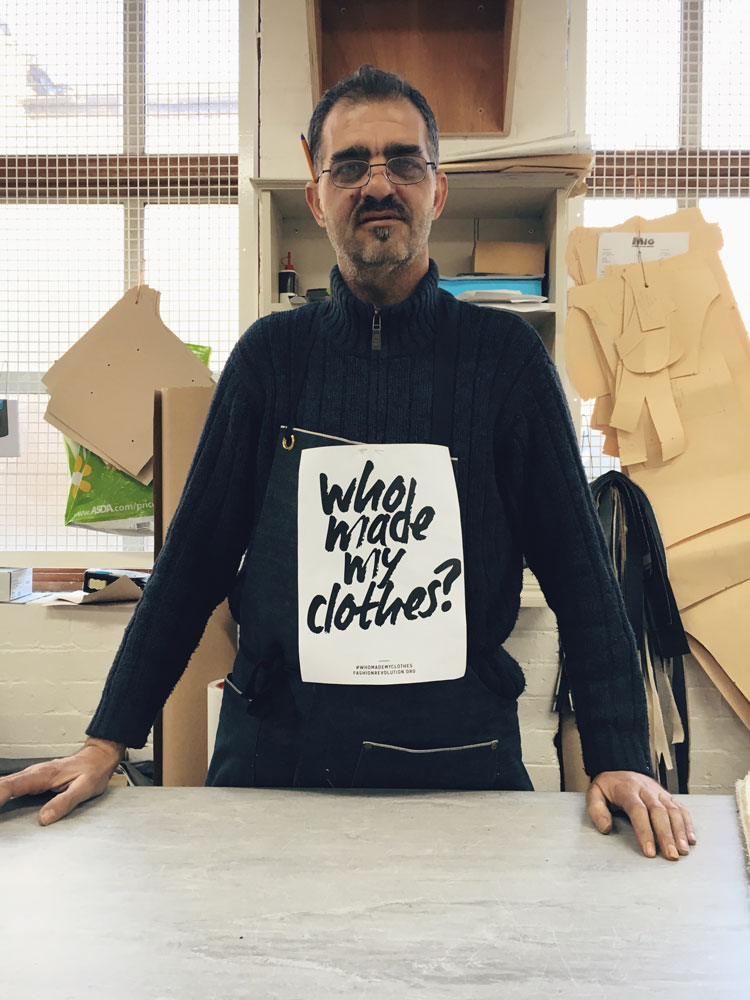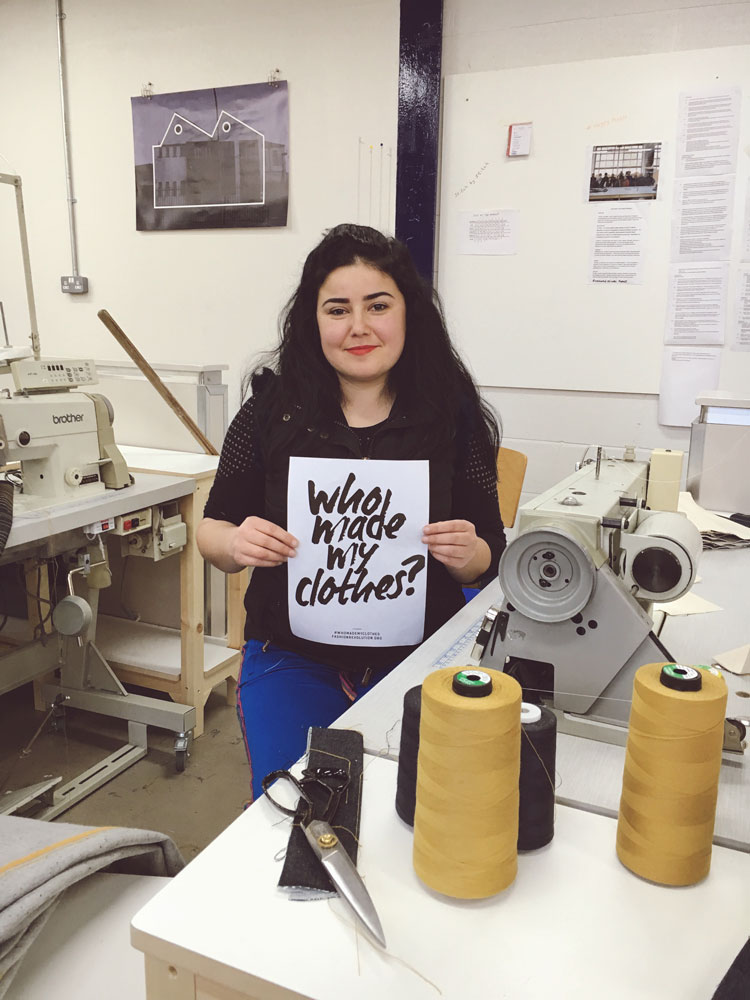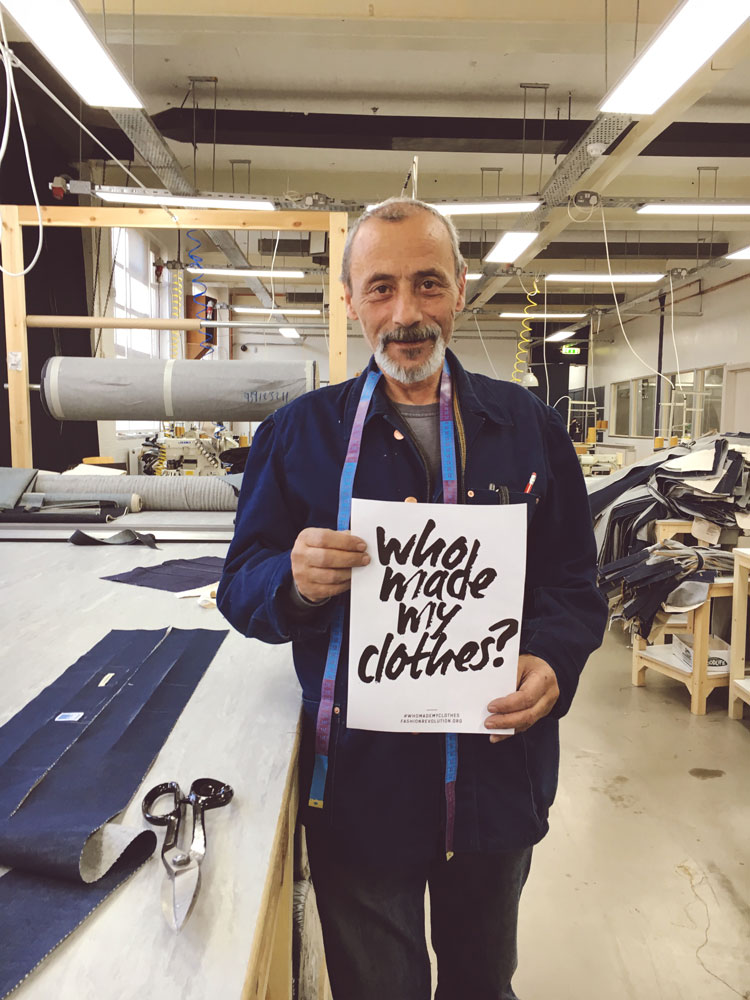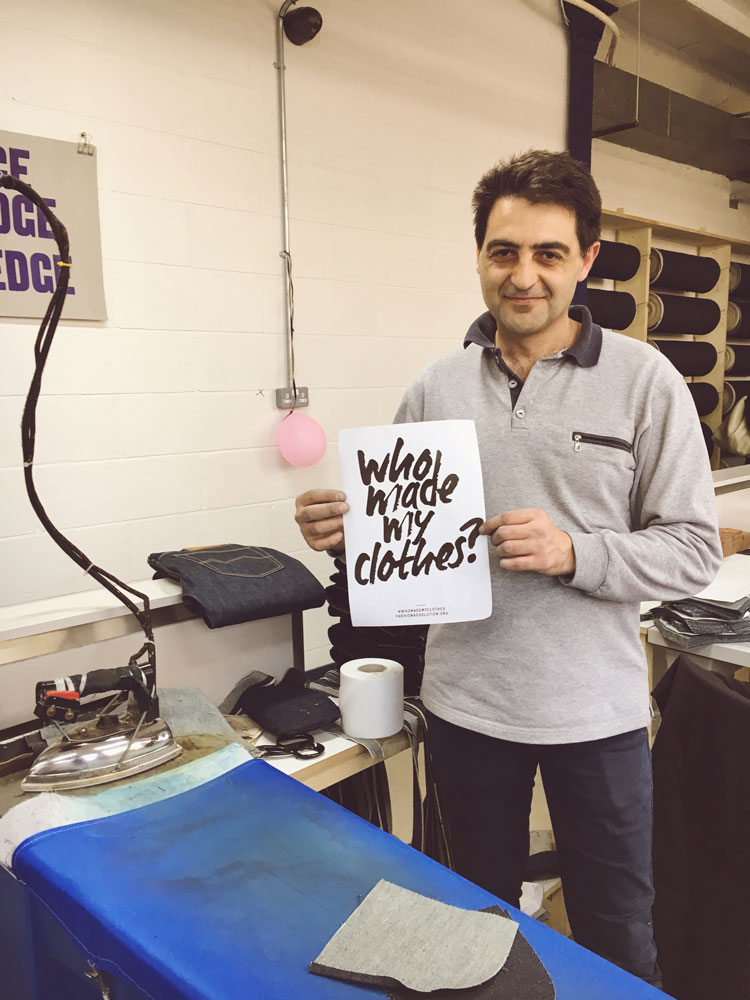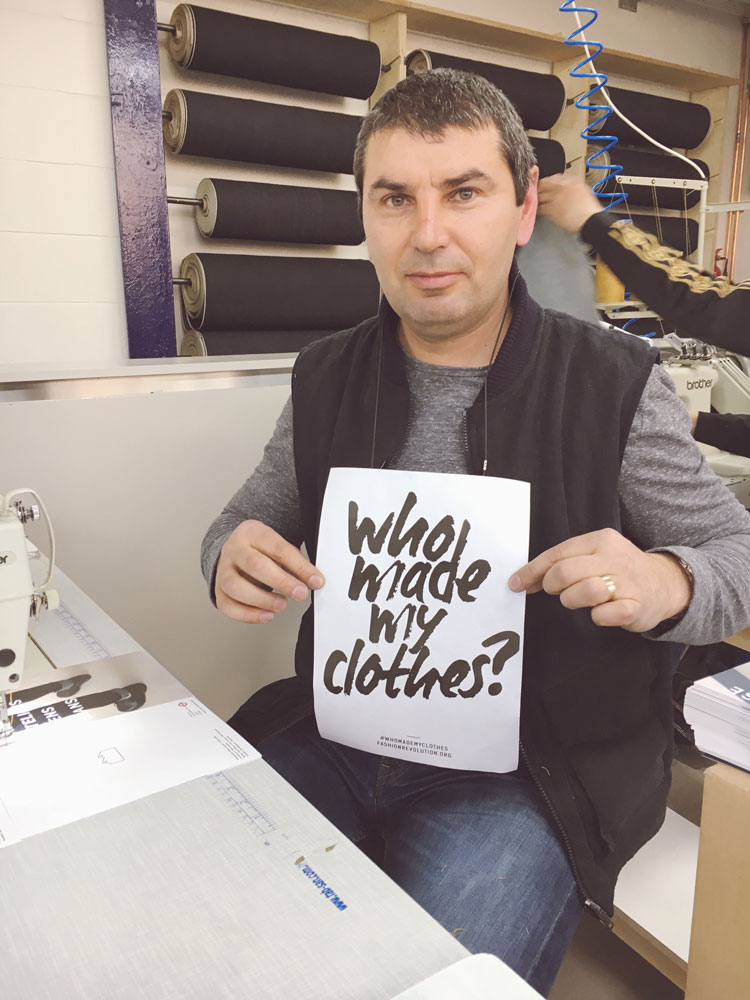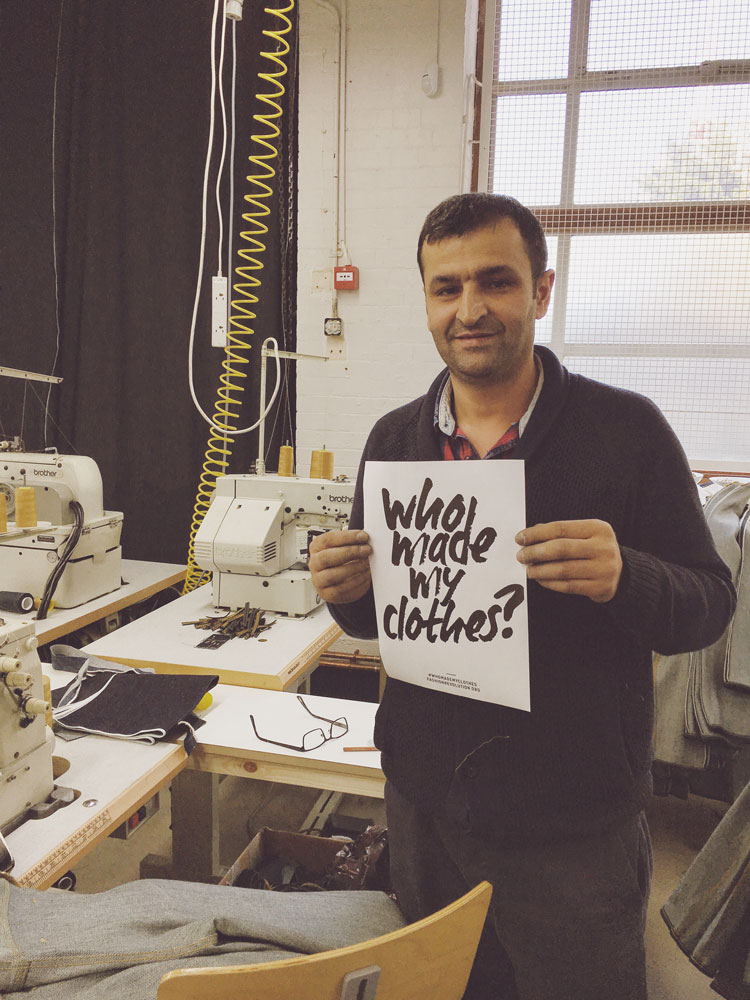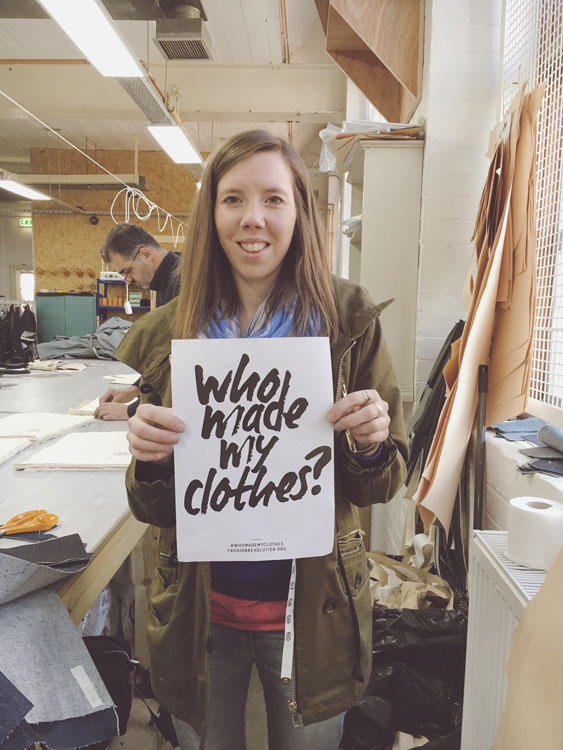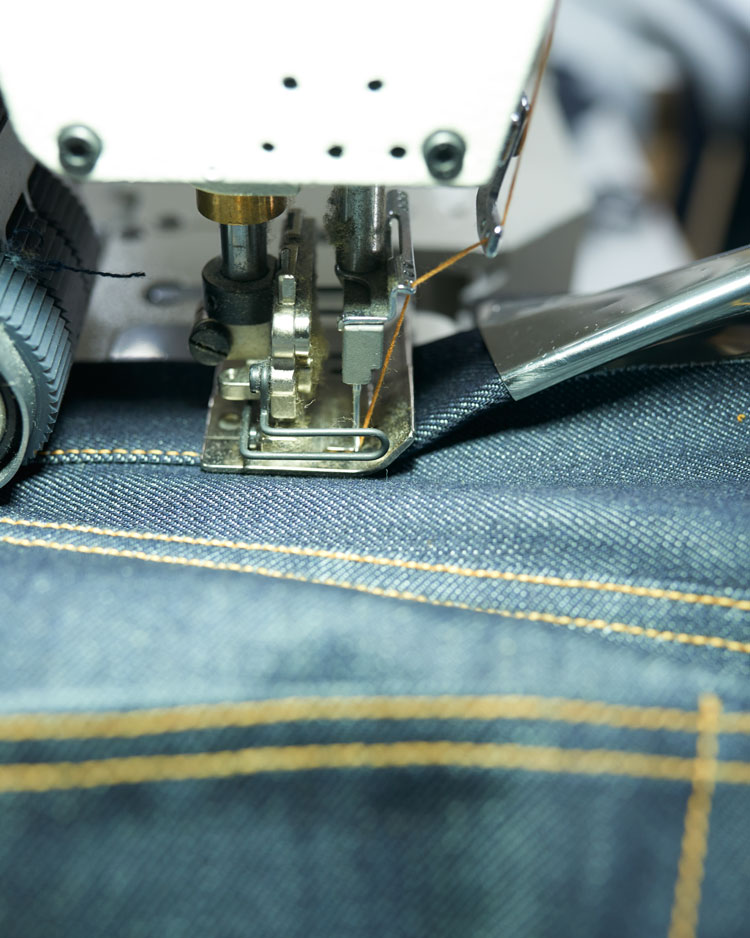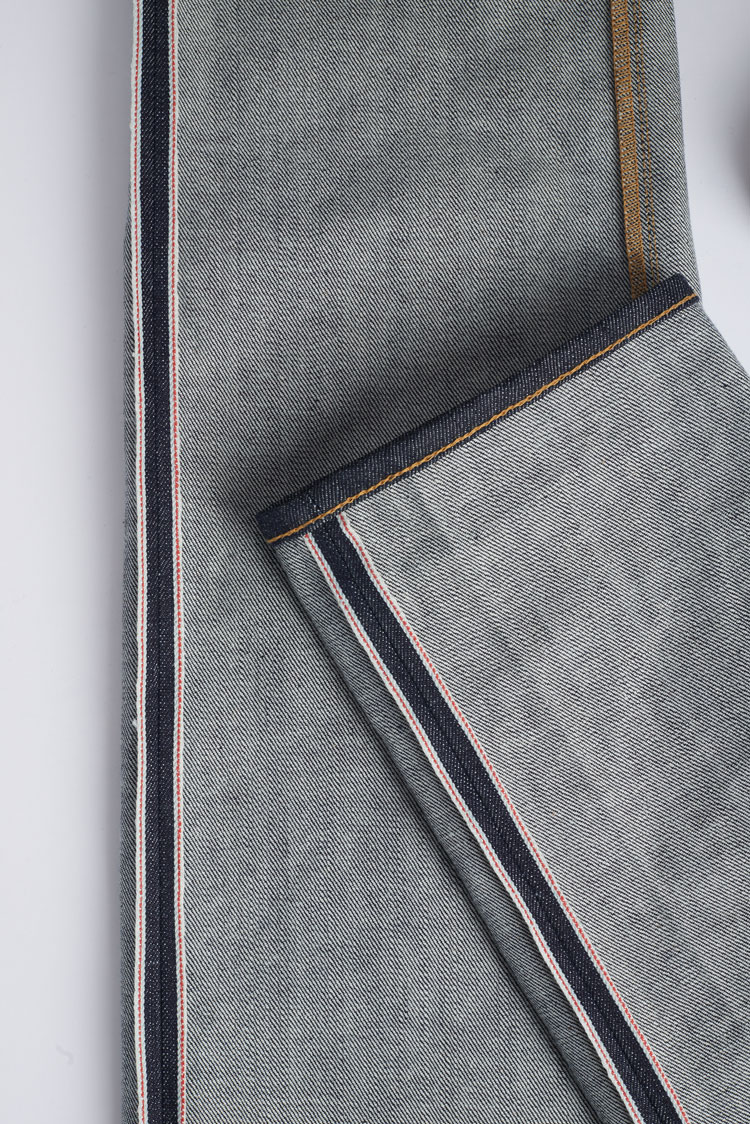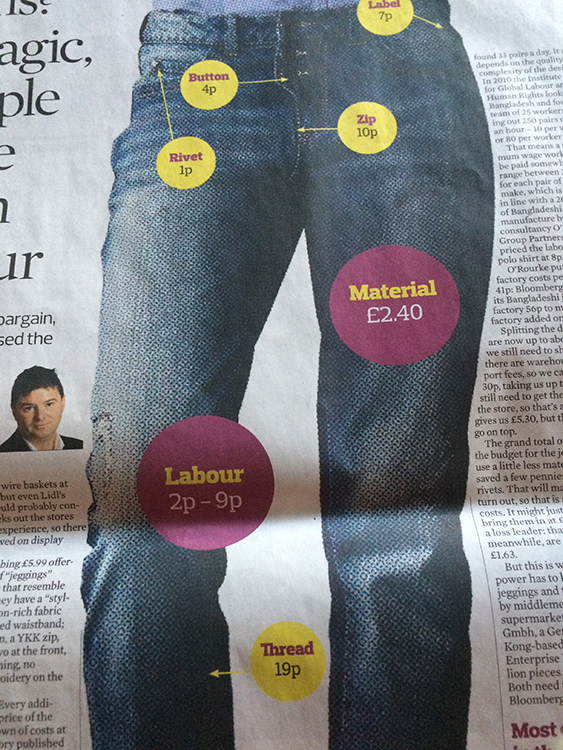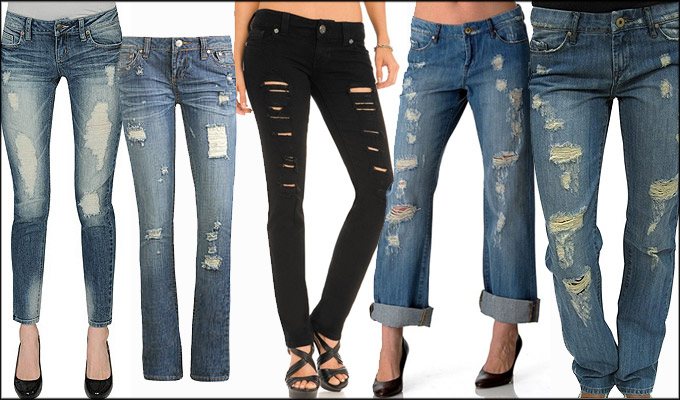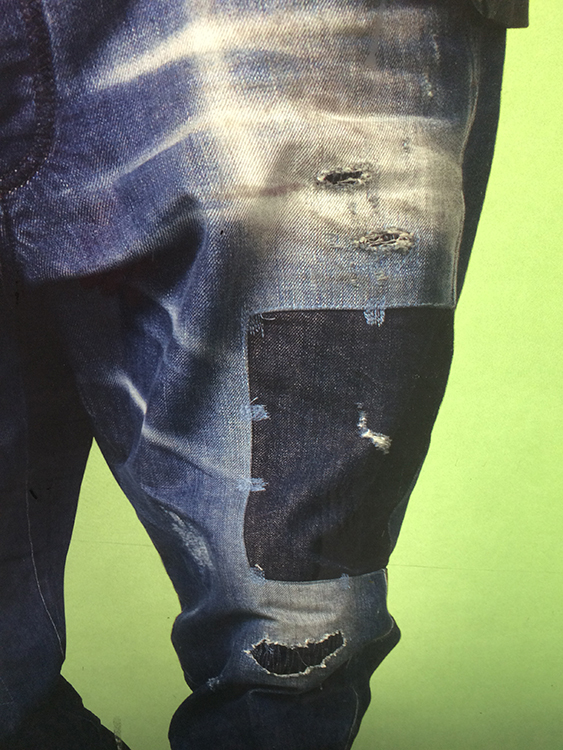Mary Pierson, a Madewell brand farmertervezésért felelős alelnöke szerint a skinny jeans csillaga leáldozóban van, és egyre népszerűbbek a bő-, vagy egyenes szárú fazonok, valamint a nehezebb, kevésbé rugalmas és nem nyúló farmerek. Bár a fogyasztók fizikai és érzelmi megnyugvást éreztek abban, hogy kényelmes ruhákba bújtak a világjárvány korai hónapjaiban, a COVID-19 nem az egyetlen tényező a bővebb, lazább darabok felé való elmozdulásban. „A skinny trend olyan sokáig volt domináns, hogy a váltás már elkerülhetetlen” – mondta Pierson.
Bő, bővebb, legbővebb
A bővebb fazonok trendjének első jelei évekkel korábban jelentek meg a kifutón, amikor az olyan streetwear orientált tervezők, mint például Virgil Abloh és Heron Preston megvették a lábukat a luxuspiacon, drága designer címkével felvértezve a műfaj jellegzetes esztétikáját.
Ha hozzáadjuk a nemek nélküli design általános érvényesítésére való igényt (amely nagymértékben támaszkodik a „dobozszerű”, munkaruha-ihlette sziluettekre), és a milleniálok ’90-es évek iránti nosztalgiáját, valamint a „csúnya” cipők térnyerését – a szélesebb, lazább, bővebb stílusok divatjának megérkezése és hatalomra kerülése nem is annyira meglepő.
A cselekmény csavarja azonban a gyorsaságban és a mindent uraló egyediségmániában rejlik: míg korábban az emberek csak jóval lassabban vettek át és szoktak meg trendeket, ma már a közösségi médiának, és a járványt követő „végre ki lehet öltözni”-felszabadulásnak köszönhetően minden felgyorsult és egyedileg determinált lett. Az így létrejövő trendciklus szerint ma már BÁRMIT viselhetünk, amit jónak látunk.
„Ebben a pillanatban nem merítünk ihletet senkitől, csak magunktól” – mondta Zihaad Wells, a True Religion kreatív igazgatója. A Ricky egyenes farmer továbbra is a True Religion első számú darabja, mert nemcsak a márka eredeti stílusára, hanem a divat aktuális alakulására is rímel. „Nyilvánvaló, hogy a farmer 2022-es új trendciklusában a múlt üdvözlése történik” – mondta Wells, hozzátéve, hogy a True Religion olyan archív stílusokkal elégíti ki a nosztalgia iránti igényt, mint a rövid szabású nadrágok a női fazonoknál vagy a férfiaknál a bő sziluettek.

A Favorite Daughter design igazgatója, Carla Calvelo egyfajta előrejelzésként kifejtette, hogy a ’90-es és 2000-es évek nagy hatást gyakoroltak erre az évre: a laza, túlméretezett, bootcut és egyenes szárú stílusok mindent visznek idén. A márka folytatja a magas derekú és hosszúkás sziluettek gyártását. Hozzátette, a testreszabott illeszkedések irányába való elmozdulás továbbra is izgatja a fantáziáját.
Ugyanez a korszak szűrődik át a 2022-es Joe’s Jeans kollekciókon is – és ez komfortzóna Alice Jackman, a márka design igazgatója számára. „Több mint 20 éve dolgozom a farmeriparban, így a ’90-es évek végén és a 2000-es évek elején tapasztalt tervezési folyamatok nagy része az első pillanattól kezdve ismerős számomra” – mondta. A Joe következő kollekciói lazább és szélesebb illeszkedést kínálnak a trendciklusnak megfelelően. A márka egy új „Heirloom” nevű szövettel is dolgozik, amely Jackman szerint kiemelkedő farmer twill vonallal rendelkezik, rendkívül puha érzettel és rugalmassággal.
„Remek erőforrásaim vannak itt Los Angelesben a vintage kapcsán, ezért mindig fedezek fel csodás koptatott darabokat, amelyekből lehet inspirálódni a modern farmerek gyártásakor” – tette hozzá.
Eközben Steffan Attardo, a márka férfi design igazgatója szerint a régi iskola divatja vezérli a Hudson Jeans új irányát. A festék fröccsenése, a roncsolás és a bevonatos szövetek a brand közelgő kollekcióinak részei lesznek, de az igazi hangsúly a bő illeszkedések kialakításán van.
„A szélesebb szárú szabás az új mainstream” – hangsúlyozta Attardo.
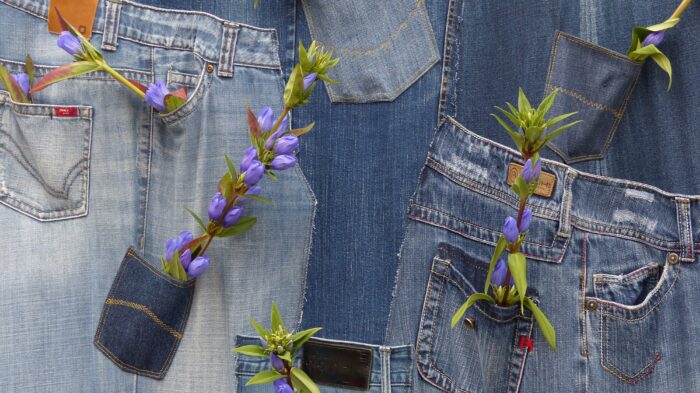
Közösségi háló
A múlt ihletet ad, de a Z generáció az, amely másolja és relevánssá teszi az Instagramon és a TikTokon lévő közösségi megafonjain keresztül az „új-régi” trendeket.
Noha a közösségi média már a 2000-es években is közvetítette a divatot a Tumblr-rel az élen, a jelenlegi platformok nagyobb jelentőséget kaptak a fogyasztók és a márkák számára – ezek által nemcsak közvetítik, hanem megteremtik, majd remixelik is a trendeket.
„A közösségi média valóban a folyamatosan megjelenő új trendek katalizátora lett” – mondta Sarah Ahmed, a DL1961 társalapítója és kreatív igazgatója. „Olyan gyorsan és egyszerűen oszthatók meg az új információk és innovációk, hogy nem csoda, hogy a farmertrendek ilyen ütemben változnak.”
A farmertrendek gyors átalakulása a DL1961 javára szól. Februárban a New York-i székhelyű márka bemutatta első farmercsaládját, amely hulladék pamutszálakból készült. Stílusuk középpontjában a széles szár, a bootcut, a kiszélesedő és az egyenes szabás áll. „Mivel a gyártás nálunk egy fedél alatt, a családi tulajdonban lévő pakisztáni gyárunkban zajlik, könnyen módosíthatunk, és szükség esetén gyorsan alkalmazkodhatunk az új stílusokhoz és trendekhez” – mondta Ahmed. Kiemelte még, hogy minden az információ terjedésének sebességéről és a farmergyártás technológiai fejlődéséről szól, amely lehetővé teszi számukra, hogy lépést tartsanak a változásokkal.
A buborék kipukkanása
Minden győzelmi sorozatnak vége szakad, és a tervezők arra számítanak, hogy a farmerbuborék hamarosan kipukkanhat, mint ahogyan azt már az iparágban megjelent, majd gyorsan eltűnt trendek esetében nem egyszer tapasztalhattuk.
Pierson hozzátette, korábban elvárás volt, hogy egy farmerszabás vagy -trend legalább öt évig, esetleg tovább tartson, de ma már ez nincs így, hiszen a vásárlók és az egyéb ruhaneműk trendjei is gyorsan átalakulnak. Noha nem biztos, hogy a fogyasztók gyorsan elfelejtik az aktuális farmerirányzatot – Pierson szerint a következő egy-két évben az egyenes, széles és kiszélesedő szárú farmerek lesznek a középpontban.
Így vagy úgy, de tény, hogy a farmer sosem megy ki a divatból. Ugyanakkor, mint tudjuk, a farmer negatív hatással van a környezetre, mivel szennyezi a vizeket a gyártásához használt festékek miatt, ezenkívül az anyag előállításához használt gyapottermés sok vizet, valamint vegyi növényvédő szert igényel.
Tekintettel arra, hogy a szűz farmer az egyik legkevésbé fenntartható szövet a piacon, az újrahasznosított farmer lehet a környezetbarát alternatíva. A posztindusztriális farmerszövet használata kiküszöbölheti a környezetszennyező előállítási folyamatokat.
A cikk eredeti verziója a Rivet 2022-es tavaszi számában jelent meg.
Fordítás, szerkesztés: Zahorján Ivett
We are the first factory brand to be making authentic premium quality jeans in London for at least the last fifty years. Perhaps the first ever to be making selvedge denim garments in London.
As a community focused enterprise, all factory employees and machinists are shareholders in the company. A place to observe and learn how jeans are created and to visit our allotment growing Japanese indigo to dye the garments.
Name : Mr Husseyin
How long have you been in manufacturing? 40 years
How did you get into manufacturing ? Both my father and grandfather were tailors in Turkey for their whole lives and it influence me to do the same.
How does working here compare to other jobs in manufacturing? It is better than anywhere I have worked before.
What does working here mean to you? I have more opportunities and better life prospects.
Name : Ms Emine
How long have you been in manufacturing? 10 years
How did you get into manufacturing ? I learned to sew In Bulgaria and have been sewing for 10 years now. I’ve lived in London for 4 or 5 years and I am very happy to use the skills I have here.
How does working here compare to other jobs in manufacturing? It is better than any other factory I have worked in. The space is much cleaner and bigger and a much nicer place to work.
What does working here mean to you? It means I can carry on using my skills to earn a good living to make a better life for myself.
Name : Mr Kenan Habali
How long have you been in manufacturing? 40 years +
How did you get into manufacturing? It is the only thing I know and the thing I know best.
How does working here compare to other jobs in manufacturing? It is better than anywhere I have worked before.
What does working here mean to you? Bread Money
Name : Mr Iliev
How long have you been in manufacturing? 22 years
How did you get into manufacturing? I enjoy the job, I used to work in manufacturing in Bulgaria where I am from.
How does working here compare to other jobs in manufacturing? The conditions are much better and we are treated equally.
What does working here mean to you? It means I can come to work everyday and work hard to earn a good living
Name : Mr Dimitar Conev
How long have you been in manufacturing? 27 years
How did you get into manufacturing? I like the job, sewing and manufacturing is something I enjoy doing.
How does working here compare to other jobs in manufacturing? We are paid a lot better and the working space and conditions are a lot better.
What does working here mean to you? It means I can earn a living and afford a better standard of life.
Name : Ali
How long have you been in manufacturing? 30 years
How did you get into manufacturing ? It is my favourite job. I enjoy sewing and manufacturing more than any other job.
How does working here compare to other jobs in manufacturing ? This is the nicest factory I have worked in.
What does working here mean to you? It means I can earn a proper living.
Name : Megan Fisher
How long have you been in manufacturing for ? I have been sewing for 15 years, since I was a little girl.
How did you get into manufacturing ? My mum was always really good at sewing which really inspired me, and I enjoyed textiles classes as school, the passion just grew from there.
How does working here compare to other jobs in manufacturing ? It’s really different because everyone is really honest and open. its a very transparent company, which means we have lots of visitors to see what we do.
What does working here mean to you ? It mean that i get to live an exciting life of living and working in London.
The antithesis of fast fashion, denim jeans are known universally as the quintessential egalitarian garment, with a slow heritage dating back 150 years. Launching in April 2016, the Blackhorse Lane Ateliers is an entirely unique factory brand and manufacturer of superior quality denim goods. Based within a tastefully renovated 1920s factory building in Walthamstow, the brand combines the production of artisan jeans with the establishment of a modern methodology for community living – Think Global, Act Local.
The key element of the Blackhorse Lane Ateliers manifesto has been to challenge the commonly held, modern day attitude of short-term gains, instant gratification and disposability, by implementing a more sustainable, ethical and transparent business model, to the advantage of the consumer. In order to keep the carbon footprint low, each pair of jeans will be produced within their London Atelier and crafted by local Londoners, using only the finest quality selvedge and organic denim, expertly sourced from Europe and Japan.
What kind of a boyfriend (or life) do you have?
Thankfully, as the case against cheap clothing is reaching maturity, more and more consumers are becoming aware of fast fashion’s negative impact on people and planet. Documentaries such as the True Cost and high profile campaigns (and campaigners) are rapidly changing public perceptions and we are now more informed than ever.
Cheap clothing costs.
It costs environmentally and socially. It is as inefficient as it is polluting. It is rooted in the exploitation of both human and natural resources and as consumer awareness grows we begin to see an increased sense of outrage when we spot blatant cases driving this cheapness even further.
Right now it’s the lidl boyfriend jeans, at £7.99. The denim range starts at £5.99. One pair of jeans: £5.99.
Ridiculous may not be a strong enough word to describe the phenomenon, but it nevertheless is worthy of all our ridicule because for this ridiculous looking pair of jeans, like millions of other pairs of cheap jeans, the point is not just how much we are prepared to compromise in order to own them, such as the self respect of the people who made them (cheap jeans = cheap labour) and the environmental footprint they come laden with, but how stupid we are prepared to look like when we wear them.
Poorly made, poorly designed fast fashion pieces, produced in their millions, lack all individualism. In the case of denim, this lack of individualism speaks volumes.
Jeans, we live in them; they have become so ubiquitous we could call them humanity’s uniform.
They have crossed all cultural barriers and have represented our social and political attitudes, from utilitarian workwear in the early 1900s, to a symbol of the hippy peaceful protests in the 1960s, to punk. Everyone wears jeans: millionaires, refugees, celebrities and school kids.
A canvas that is the fabric of so many stories.
When I was growing up, it was Levi’s 501s or die. Nick Kamen stripped to wash them in a launderette, ripped jeans wearers were banned from Harrods and one would spend hours in a cold bath to mould them to fit perfectly. If you were an artist they would be splattered in paint, if you were a gardener they would gather earth in their turn-ups. They were never ironed, seldom washed. Quite a few people learned how to sew in the early 80s in a desperate move away from the 70s bell bottoms, to take them in at the seam and make them skinny.
We have no time for that anymore: now we want our jeans lived in even if we are not. Even if we are so boring and we do nothing at all all day but stare at our screens, our jeans have to say ‘ripped’ and ‘worn’ and ‘used’…like…what a life!
So, what kind of a ’life’ is your customer’s supposed ‘boyfriend’ having then, Lidl?
If we analyse the jeans anatomically, we can deduct that he wears his denim unbuttoned and slightly pulled down most of the times (see wrinkles at the top) and that he spends an inordinate amount of time with his trousers down, rubbing his thighs with something rough.
At one point he was mauled by a dog who bit his right leg, or perhaps he stumbled upon some sharp object (no blood of course) and either he is good at sewing, or his mum is, because he bothered to patch the rip up.
And, every single woman who buys the Lidl boyfriend jeans will have the same pattern of usage on her trousers as everyone else: the same rip (patched), the same wear (unnatural), the same wrinkles (trousers down = downright perv if you ask me).
In fact, if you take Lidl’s jeans and other pre-distressed denim from our generation, put them in a box and leave them, say, 1000 years, any future anthropologist looking at them would conclude that humans around 2016 were doing all sorts of really weird stuff, according to how they ‘wore out’ their jeans: hours rubbing bums on rough surfaces, crawling constantly, wearing trousers down instead of up, accidentally misusing acid, having violent tussles with wild animals on a regular basis à la Revenant, and most possibly suffered regular episodes of scabies in particular on shins and thighs.
Distressed denim is the symbol of fast fashion; its most perfect visualisation.
It shows how unintelligent it is, how undesigned it is. It shows how, for the sake of looking exactly like everybody else and owning cheap stuff, we are compromising on who we are as individuals and compromising on the wellbeing of our planet and the people who make our clothes.
It takes 1.800 gallons of water just to grow the cotton and produce a pair of jeans (without considering how many times they will be washed in their lifetime) and most distressing techniques have a radically negative effect not just on the fabric but on the environment and garment workers as well. Sandblasting, a technique which was widely used to achieve the worn look for well over 20 years, was eventually banned internationally as a result of its direct link with silicosis, a deadly respiratory disease.
There is no joy in owning these jeans.
They are a monument to all that has gone wrong with this industry. A monument to speed and impatience, the physical manifestation of a senseless race to the bottom with its dramatic social and environmental consequences.
Fashion Revolution encourages the alternative use of jeans, such as Mud’s leasing scheme and Nudie’s in-store repair services. We salute the companies innovating in this field: brands such as Monkee, Hiut, G-Star Raw and a handful of others who are breaking with this horrendous modern tradition by using organic and recycled materials and designing denim as what it is: a durable, versatile fabric that has had the power to capture our imagination like no other.
Let’s celebrate this miracle material as a success story, the fabric of our society, the one cloth that has had the power to become a form of political expression, and not turn it into the symbol of how we got things so spectacularly wrong.
Maud Laurent lives in Ouanaminthe, Haiti. She is 24 years old and has been sewing pant (trouser) pockets for the past five years. On her hopes and dreams of tomorrow:
“I had to drop out of school to make money but hope to go back some day and study computer science.”
Her message to shoppers:
“Picture my smile when you see ‘Made in Haiti.’ My friends and I worked hard to make those pants.”
Mackenzie O’ Donnell lives in San Francisco, California. She is 28 years old and getting a degree in business administration and environmental management. On her hopes and dreams of tomorrow:
“I plan to use my education to make a difference in the world so we can all enjoy our planet in harmony.” Her message to shoppers: “I believe my millennial generation are environmentally and socially conscious shoppers. I hope they will join our cause and help the movement grow.”
At Inspired Shopping we connect young women like Maud and Mackenzie through inspired journeys and multimedia. Our film “Made in Haiti” aims to rebuild human connections within global supply chains. We hope it moves shoppers to use their voice and shopping dollars to promote the well-being of workers like Maud.
At Inspired Shopping we connect the people who make our stuff to those who buy it. To learn more visit http://Inspiredshopping.org
#whomademyclothes?
